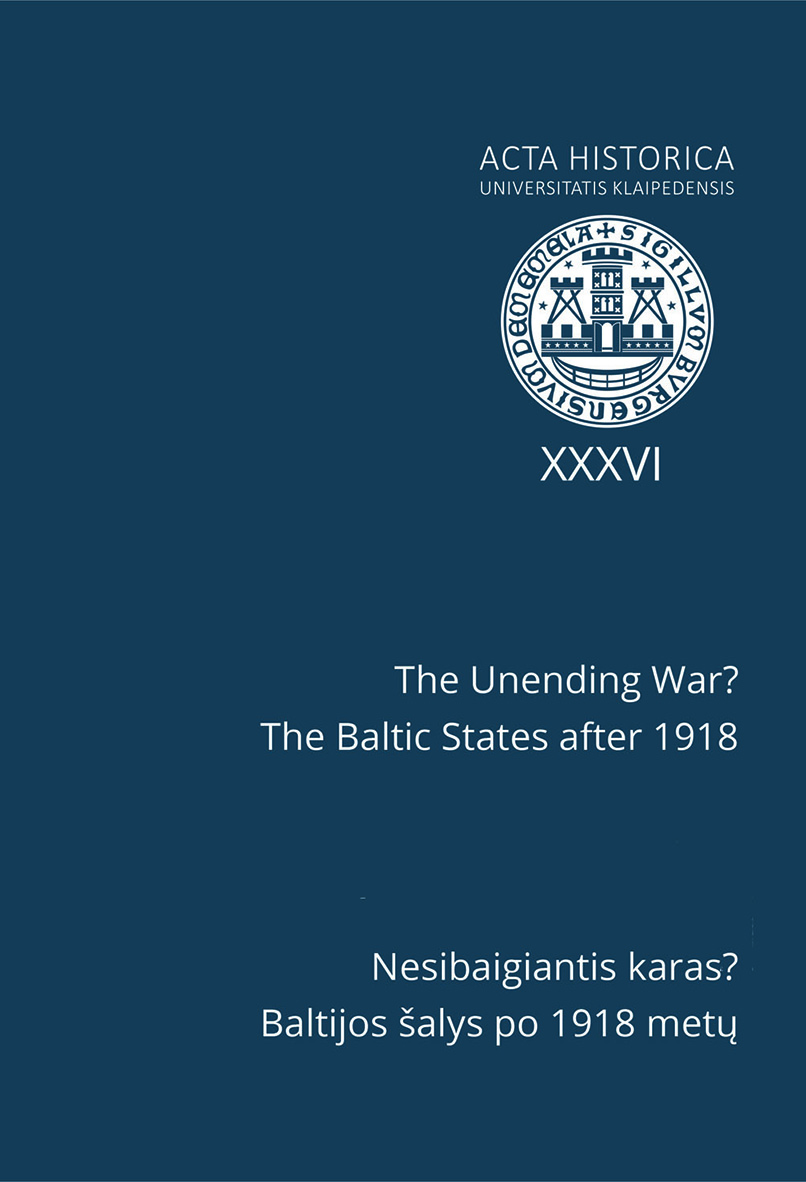Volume 36 (2018): The Unending War? The Baltic States after 1918 = Nesibaigiantis karas? Baltijos šalys po 1918 metų, December 2018

Order by:
Pub. online: 12 Dec 2018
Type: Editorial Note
 Open Access
Open Access
Journal:
Acta Historica Universitatis Klaipedensis
Volume 36 (2018): The Unending War? The Baltic States after 1918 = Nesibaigiantis karas? Baltijos šalys po 1918 metų, p. 5
Pub. online: 12 Dec 2018
Type: Review Article
 Open Access
Open Access
Journal:
Acta Historica Universitatis Klaipedensis
Volume 36 (2018): The Unending War? The Baltic States after 1918 = Nesibaigiantis karas? Baltijos šalys po 1918 metų, pp. 7–15
Pub. online: 12 Dec 2018
Type: Review Article
 Open Access
Open Access
Journal:
Acta Historica Universitatis Klaipedensis
Volume 36 (2018): The Unending War? The Baltic States after 1918 = Nesibaigiantis karas? Baltijos šalys po 1918 metų, pp. 16–23
Pub. online: 12 Dec 2018
Type: Article
 Open Access
Open Access
Journal:
Acta Historica Universitatis Klaipedensis
Volume 36 (2018): The Unending War? The Baltic States after 1918 = Nesibaigiantis karas? Baltijos šalys po 1918 metų, pp. 27–44
Abstract
Pub. online: 12 Dec 2018
Type: Article
 Open Access
Open Access
Journal:
Acta Historica Universitatis Klaipedensis
Volume 36 (2018): The Unending War? The Baltic States after 1918 = Nesibaigiantis karas? Baltijos šalys po 1918 metų, pp. 45–72
Abstract
Pub. online: 12 Dec 2018
Type: Article
 Open Access
Open Access
Journal:
Acta Historica Universitatis Klaipedensis
Volume 36 (2018): The Unending War? The Baltic States after 1918 = Nesibaigiantis karas? Baltijos šalys po 1918 metų, pp. 73–107
Abstract
Pub. online: 12 Dec 2018
Type: Article
 Open Access
Open Access
Journal:
Acta Historica Universitatis Klaipedensis
Volume 36 (2018): The Unending War? The Baltic States after 1918 = Nesibaigiantis karas? Baltijos šalys po 1918 metų, pp. 109–123
Abstract
Pub. online: 12 Dec 2018
Type: Article
 Open Access
Open Access
Journal:
Acta Historica Universitatis Klaipedensis
Volume 36 (2018): The Unending War? The Baltic States after 1918 = Nesibaigiantis karas? Baltijos šalys po 1918 metų, pp. 125–149
Abstract
Pub. online: 12 Dec 2018
Type: Article
 Open Access
Open Access
Journal:
Acta Historica Universitatis Klaipedensis
Volume 36 (2018): The Unending War? The Baltic States after 1918 = Nesibaigiantis karas? Baltijos šalys po 1918 metų, pp. 151–174
Abstract
Pub. online: 12 Dec 2018
Type: Source Publication
 Open Access
Open Access
Journal:
Acta Historica Universitatis Klaipedensis
Volume 36 (2018): The Unending War? The Baltic States after 1918 = Nesibaigiantis karas? Baltijos šalys po 1918 metų, pp. 177–242